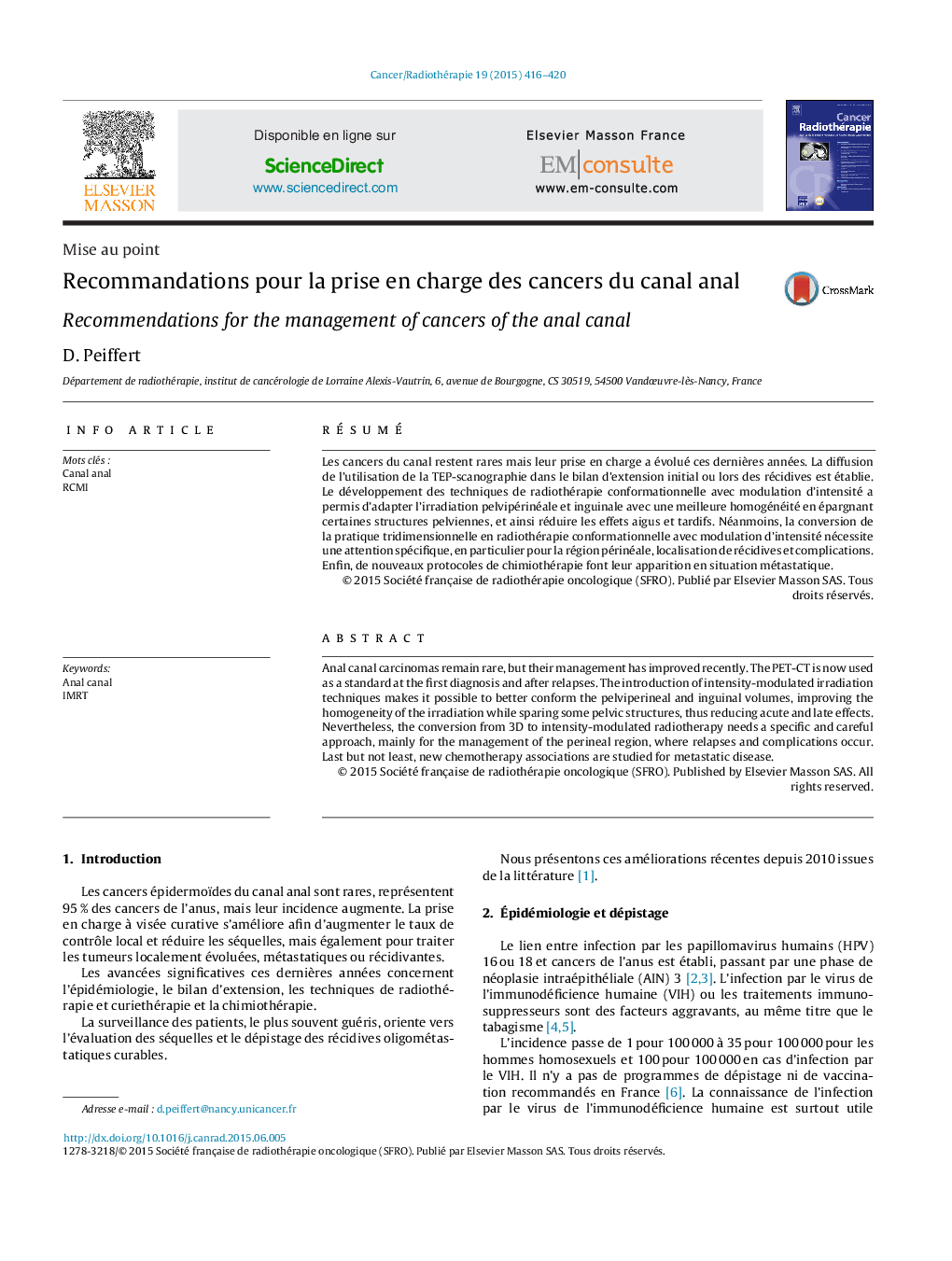| Article ID | Journal | Published Year | Pages | File Type |
|---|---|---|---|---|
| 2117346 | Cancer/Radiothérapie | 2015 | 5 Pages |
RésuméLes cancers du canal restent rares mais leur prise en charge a évolué ces dernières années. La diffusion de l’utilisation de la TEP-scanographie dans le bilan d’extension initial ou lors des récidives est établie. Le développement des techniques de radiothérapie conformationnelle avec modulation d’intensité a permis d’adapter l’irradiation pelvipérinéale et inguinale avec une meilleure homogénéité en épargnant certaines structures pelviennes, et ainsi réduire les effets aigus et tardifs. Néanmoins, la conversion de la pratique tridimensionnelle en radiothérapie conformationnelle avec modulation d’intensité nécessite une attention spécifique, en particulier pour la région périnéale, localisation de récidives et complications. Enfin, de nouveaux protocoles de chimiothérapie font leur apparition en situation métastatique.
Anal canal carcinomas remain rare, but their management has improved recently. The PET-CT is now used as a standard at the first diagnosis and after relapses. The introduction of intensity-modulated irradiation techniques makes it possible to better conform the pelviperineal and inguinal volumes, improving the homogeneity of the irradiation while sparing some pelvic structures, thus reducing acute and late effects. Nevertheless, the conversion from 3D to intensity-modulated radiotherapy needs a specific and careful approach, mainly for the management of the perineal region, where relapses and complications occur. Last but not least, new chemotherapy associations are studied for metastatic disease.
